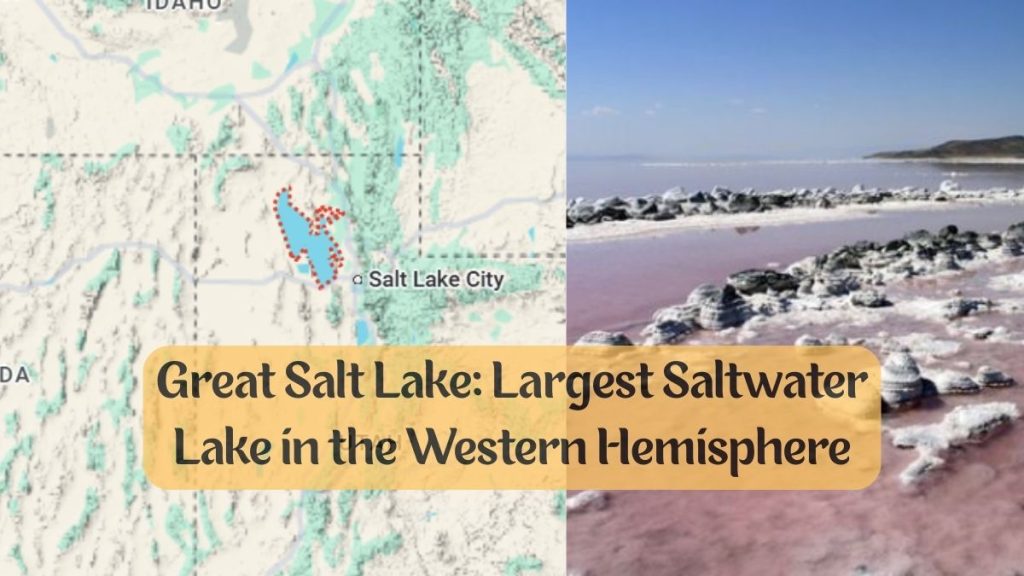Where is the Great Salt Lake Located?
The Great Salt Lake, the largest saltwater lake in the Western Hemisphere, is located in the northern part of the state of Utah, in the United States. Situated just northwest of Salt Lake City, the state capital, the lake is a remnant of the ancient Lake Bonneville, a prehistoric pluvial lake that once covered a large portion of the Great Basin.

This Lake is primarily fed by three major rivers—the Jordan, Weber, and Bear Rivers—and has no outlet, meaning water only leaves through evaporation. This unique geography contributes to its high salinity, making it several times saltier than the ocean.
Surrounded by diverse landscapes, including wetlands, desert terrain, and mountain ranges, the Lake is a significant ecological and economic resource for Utah and a fascinating destination for visitors interested in natural wonders and wildlife.
Why is Great Salt Lake pink?
The Great Salt Lake’s distinctive pink or reddish hue is a natural phenomenon primarily attributed to the presence of halophilic (salt-loving) microorganisms. Specifically, the dominant factors are a type of algae called Dunaliella salina and a group of microorganisms known as halophilic Archaea.
Dunaliella salina produces red carotenoid pigments as a protective mechanism against the high salinity and intense sunlight of the lake. These pigments, in combination with the reddish pigments of the halophilic Archaea, tint the water, especially in the lake’s north arm where salinity is highest.
The higher the salt concentration, the more these organisms thrive, leading to a more pronounced pink coloration. This unique biological interaction creates a stunning visual spectacle, making the Great Salt Lake a captivating subject for scientific study and a remarkable natural wonder.
Cities Located Near the Lake
Several cities are located near the Lake, with Salt Lake City being the most prominent. As the capital of Utah, Salt Lake City lies just southeast of the lake and plays a significant role in the region’s economic and cultural life.
Other cities and communities situated around the Great Salt Lake include Ogden to the north, which is an important transportation and industrial hub, and Layton, located between Salt Lake City and Ogden. These urban areas benefit from the lake’s proximity, though they also face challenges related to its fluctuating water levels and environmental impact.
The presence of these cities makes it accessible to a large population, contributing to tourism and research activities while also necessitating careful management of the lake’s ecosystem.





























